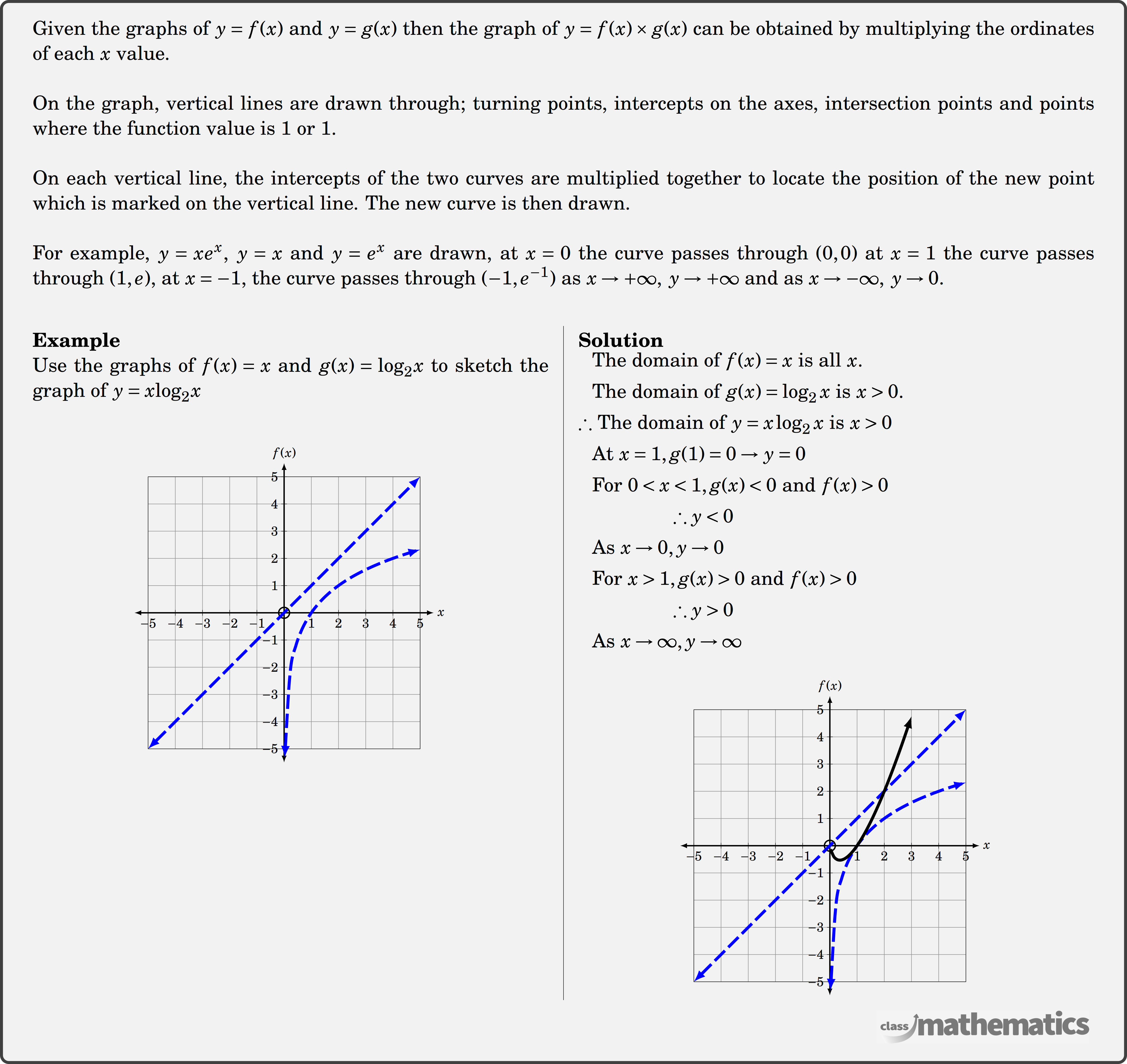Resources for Graphing-Multiplying Ordinates
-
Video Tutorials
1
Click Here
Graphing-Multiplying Ordinates Theory

1

Videos relating to Graphing-Multiplying Ordinates.
With all subscriptions, you will receive the below benefits and unlock all answers and fully worked solutions.
Given the graphs of \(y = f(x)\) and \(y = g(x)\) then the graph of \(y = f(x) \times g(x)\) can be obtained by multiplying the ordinates of each \(x\) value.
On the graph, vertical lines are drawn through; turning points, intercepts on the axes, intersection points and points where the function value is \(1\) or \(1\).
On each vertical line, the intercepts of the two curves are multiplied together to locate the position of the new point which is marked on the vertical line. The new curve is then drawn.
For example, \(y = x{e^x}\), \(y = x\) and \(y = {e^x}\) are drawn, at \(x = 0\) the curve passes through \((0,0)\) at \(x = 1\) the curve passes through \((1,e)\), at \(x = - 1\), the curve passes through \(( - 1,{e^{ - 1}})\) as \(x \to + \infty ,\,\,y \to + \infty \) and as \(x \to - \infty ,\,\,y \to 0\).
NSW Syllabus Reference: ME-F1.1: Graphical relationships. This will require student to